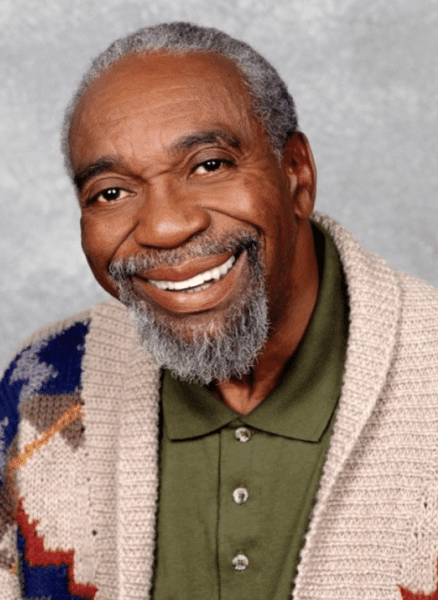By Ron Calhoun
Bill Cobbs was born and raised in Cleveland, Ohio, where his parents were hard-working people who instilled in him a sense of self-reliance and humility. As an amateur actor at the city’s Karamu House Theater, he starred in the Ossie Davis play “Purlie Victorious.”
Cobbs was an Air Force radar technician for eight years. He also worked in office products at IBM and sold cars in Cleveland. In 1970, at the age of 36, he left for New York to seek work as an actor. There, he turned down a job in the NBC sales department in order to have time for auditions. He supported himself by driving a cab, repairing office equipment, selling toys, and performing odd jobs.
His first professional acting role was in “Ride a Black Horse” at the Negro Ensemble Company. From there, he appeared in small theater productions, street theater, regional theater, and at the Eugene O’Neill Theater. His first television credit was in “Vegetable Soup” (1975), a New York public television educational series. He made his feature film debut in the original “Taking of Pelham One Two Three” (1974).
In his free time, Cobbs enjoys music, reading, and playing his drums. He lives in New York City and Los Angeles, California, and continues acting.
Raymond Winbush is one of five children. The middle child was born to Dorothy Winbush, and Harold Winbush, a
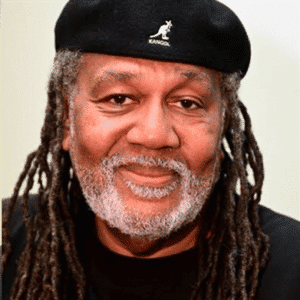
Cleveland, Ohio steelworker.
At the request of his elementary school art teacher, Winbush was tested and scored high on the Stanford-Binet Intelligence Test. Life changed for Winbush when he was bused from his poor, Hough Avenue neighborhood to an accelerated school in a middle-class and predominantly Jewish neighborhood.
Much of Winbush’s early childhood narrative is detailed in his first book, The Warrior Method. Winbush’s work has been recognized by many, especially in the area of understanding racism and its impact on the Nine Areas of White Supremacy as discussed by Neely Fuller and Dr. Frances Cress Welsing. He was a guest on the Oprah Winfrey Show, with the stars of the critically acclaimed and Oscar-winning film, Crash, and a delegate to the 2001 United Nations World Conference Against Racism.
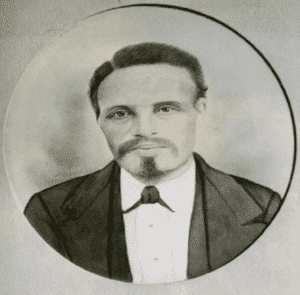
George Peake arrived in Cleveland with his wife and 2 sons in April 1809. They were apparently well-off financially when they arrived. Peake’s wife reportedly had half a bushel of silver dollars, a remarkable sum at a time when the most commercial activity involved barter and trade. Peake himself was also rather wealthy.
On December 30, 1811, he purchased 103 acres of land in Rockport, originally in Cuyahoga County.
Peake’s initial wealth was apparently ill-gotten. As a British soldier in the French & Indian War, he had served under Gen. Wolfe in the battle of Quebec but later was reported to have deserted the army, taking with him the money he had been given to pay the other soldiers.
Peake endeared himself to his Cleveland neighbors by inventing a new hand mill, which was easier to use than the crude “stamp mortar and spring pestle” they had adapted from the Indians’ process for grinding grain.
Peake’s mill used stones that were 18-20″ in diameter and that produced a much better quality of ground meal. He quickly gained the respect of the citizens throughout the community.
Hailing from Cleveland, Ohio, Black Death was the first all-Black heavy metal
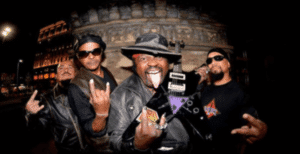
band. This claim is contested by the band Sound Barrier but is often attributed to Black Death which formed in 1977 and whose demo predates Sound Barrier’s full-length album “Total Control” by two years.
The band’s original lineup
consisted of Greg Hicks on guitar, Phil Bullard on drums, and Clayborn Pinkins on bass. They wouldn’t find a lead singer until the following year when guitarist and vocalist SiKi Spacek joined.
The band existed without a name for almost two years before original members Greg Hicks and Clayborn Pinkins came up with “Black Death.” Pinkins wouldn’t see what the band would grow into as he was murdered in early 1979. The band would go through another bassist before Darrell Harris joined making up the classic lineup heard on its 1984 debut. They would get to start recording music for a full-length album after their early songs were well received in the Cleveland area.
First, they recorded a Cleveland heavy metal compilation which became a rare item. The band would fall apart in the late 1980s with members going into other bands and activities. Before Black Death ended, there were plans for a second full-length album called “The Black Assassin” for which a few songs were recorded.
https://www.metal-archives.com/bands/
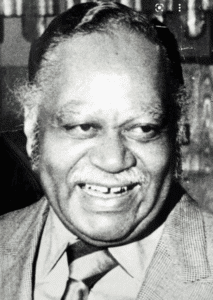
Born June 25, 1903, in Washington, PA, Ulysses Dearing was named and raised by an uncle. Reared in poverty, Dearing received little formal education and left home when young to work odd jobs. At 15, he worked in the Carnegie Steel mills. By 19, he was a chef in Wilkinsburg, Penn. At age 21, Dearing had saved enough money to open a small hotel and restaurant, but saw it destroyed by a flood.
He came to Cleveland around 1930. When he stepped off the bus in Cleveland, he had 98 cents, which he tossed onto the sidewalk. “I just figured I needed a lot more than 98 cents,” he said, “and maybe somebody else could use it more than me.”
Dearing found work as a short-order cook and eventually became the manager of Cedar Gardens, where he could be seen chatting with Cab Calloway, Duke Ellington, and Lena Horne.
In 1946, he opened the first of a handful of restaurants at 1930 East 105th St., where he mingled with Joe Louis, Louis Armstrong, and Count Basie. He later opened one of Cleveland’s first takeout spots, The Carry Out at East 97th Street and Cedar Avenue.
He was famous for his fried chicken, dapper dress, and generosity, especially to children.
Julia B. Calhoun Walker was born in Wilcox, Alabama, on July 17, 1922. She graduated from Central High School in 1942.
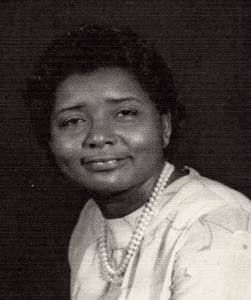
In 1943 she went to work for the Cleveland Transit System, now known as RTA, as one of the four first Black female operators.
She retired from RTA after 33 years of service. Julia later worked as a shuttle bus driver for the Cleveland Clinic Foundation for 10 years. Affectionately known as Mama Julia, her passion in life was cooking. She cooked for family, friends and restaurants. She was best known for her Seven-Up cakes and rolls.
She was never able to say no to anyone or any cause. She gave generously of her time, energy, and resources.
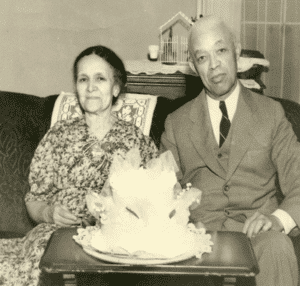
A native of Urbana, Ohio, Elmer Franklin Boyd came to Cleveland in 1898 and entered one of the few professions open to blacks at the turn of the century. He operated a funeral home in Cleveland from 1905 until his death in 1944. He learned his profession at Clark’s College of Embalming in Cincinnati and Meyer’s Embalming School in Springfield; passed the state examination in June 1905; and that Fall opened an office at 2604 Central Ave. in Cleveland.
In April of 1906, he took on a partner, Lewis J. Dean, and opened an establishment described as “a combination funeral parlor and haberdashery.” Today, the funeral home is run by Boyd’s children and grandchildren, stewards of one of the oldest black-owned businesses in Ohio.
Boyd chaired the first Freedom Fund Dinner of the Cleveland NAACP in 1959 and served as vice president of the Cleveland school board in the turbulent 1960s.
As an African-American inventor, Garrett Morgan created the early gas mask and the first traffic device with a warning

light inventor.
position. He was born Garrett Augustus Morgan on March 4, 1877, in Claysville, Kentucky, to Elizabeth Reed and Sydney Morgan, both former slaves.
Garrett only received a 6th-grade education and moved to Cincinnati, Ohio when he was 16 in search of employment. While in Cincinnati, he hired a tutor and continued his education. He moved to Cleveland in 1895 and learned to repair sewing machines, which led him to learn how things worked and laid the path for inventing.
Interesting Facts:
- In 1907, he opened his own sewing machine and shoe repair shop.
- Helped found the Cleveland Association of Colored Men in 1908.
- Both he and his wife opened a ladies’ clothing store in 1909.
- In 1916, his breathing invention helped him rescue workers trapped in a water intake tunnel beneath Lake Erie. He was featured in a newspaper. This smoke hood was completed in 1912.
- In 1913 he launched the G.A. Morgan Hair Refining Company. He sold his own patented hair-strengthening cream product, a hair straightening comb device, and hair color.
- In 1922 he filed a patent for a traffic control device with a warning position. He sold his rights to the patent to General Electric for $40,000.
- First African-American to own a car in Cleveland, Ohio.
- At the New York City Second International Exposition of Sanitation and Safety he was awarded the First Grand Prize, Gold Medal.
Do you have some Cleveland Black history in your Family? We want to know. Submit here:

